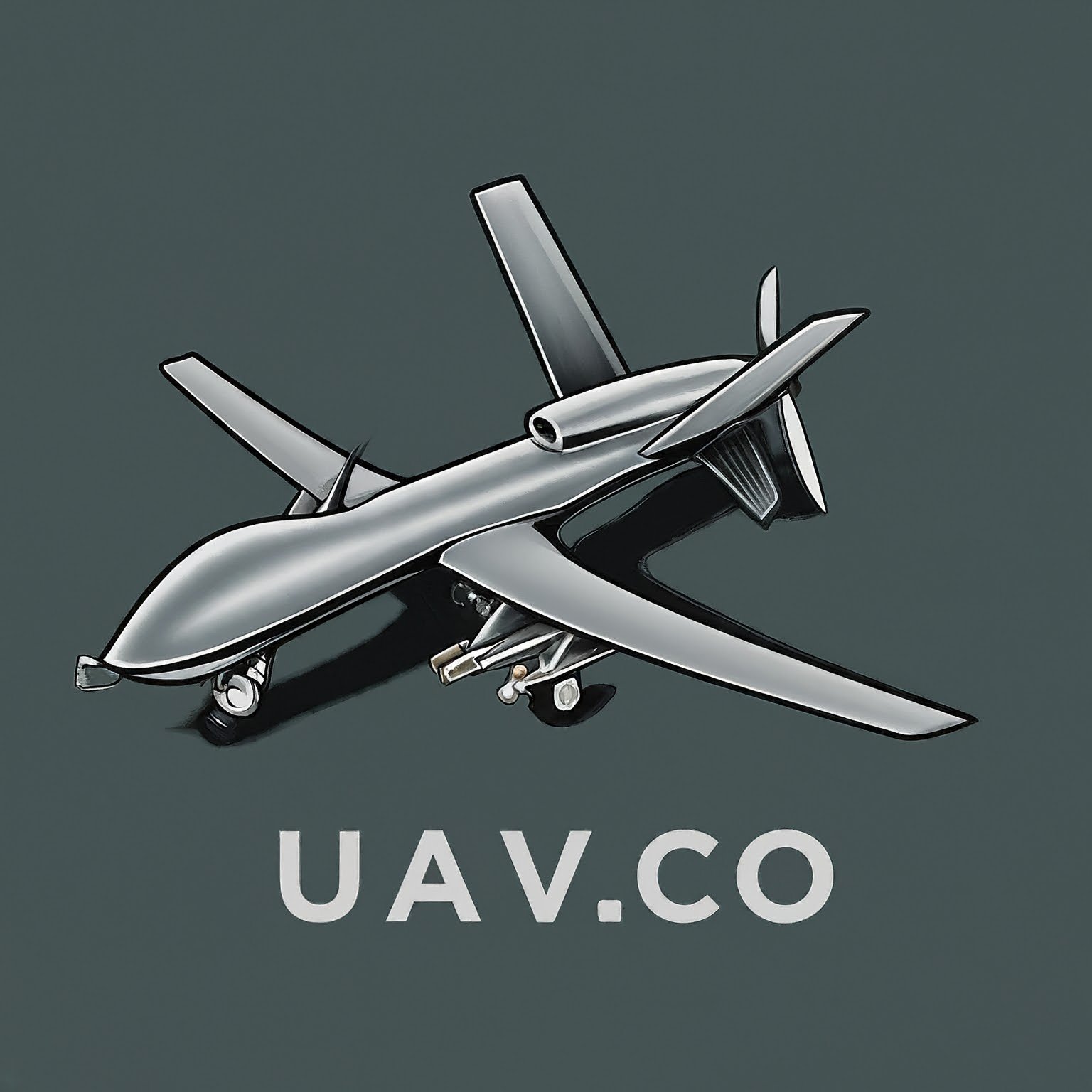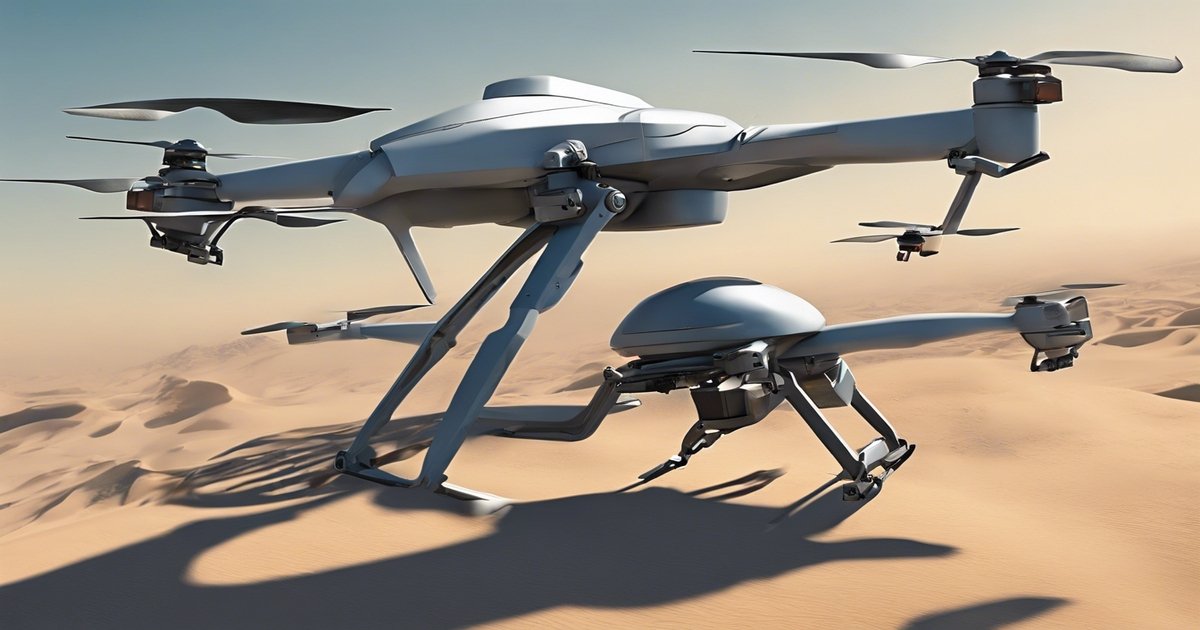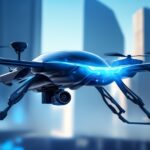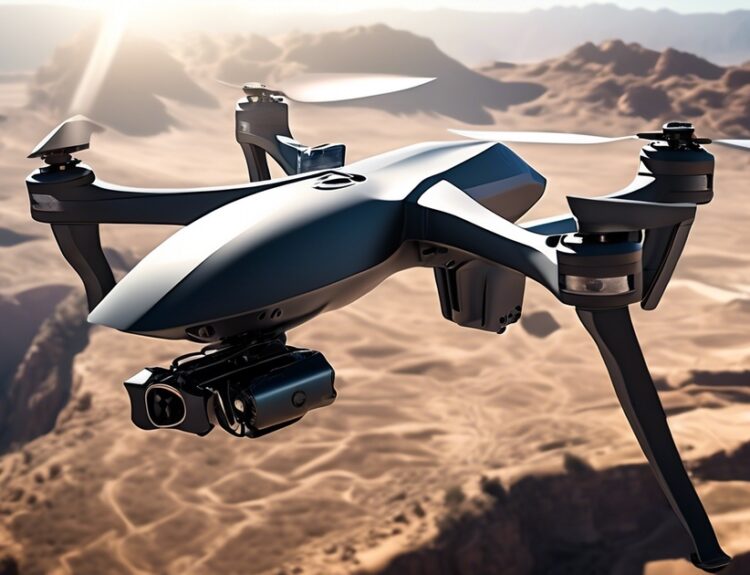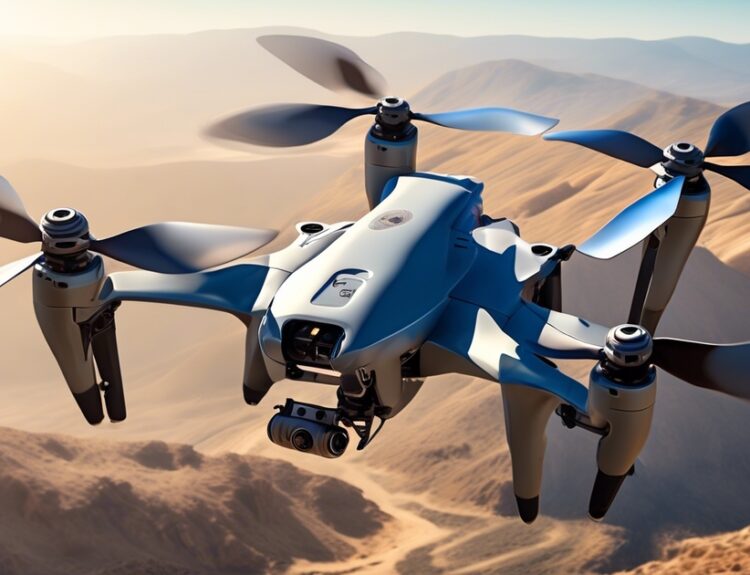In the evolving landscape of security and defense, the rise of unmanned aerial vehicles (UAVs), also known as uncrewed aircraft, presents a new set of challenges including hostile UAS detection, radars, and surveillance. These airborne devices, including aerial vehicles, aerial systems, and uncrewed aircraft, while innovative, can be repurposed for hostile intentions, necessitating robust countermeasures such as jammers. This post delves into the strategies and technologies developed to neutralize such threats, including destructive neutralisation, cyber takeover, kinetic mitigation, and surveillance. From advanced detection systems, including radars and surveillance, to electronic and cyber warfare tactics, understanding these countermeasures and mitigation strategies is crucial for maintaining airspace safety in an era where technology often outpaces regulation.
Key Takeaways
-
Effective countermeasures against hostile UAVs require a deep understanding of counter-drone technology, emphasizing the importance of staying updated with the latest advancements in the field.
-
Implementing drone monitoring and detection techniques is crucial for early identification of potential threats, enabling timely response actions to neutralize hostile drones.
-
The integration of advanced detection and neutralization methods is essential for enhancing security measures against UAV threats, highlighting the need for a multi-layered approach in counter-UAS strategies.
-
Overcoming the challenges in implementing counter-drone measures involves addressing legal, ethical, and technological barriers, underscoring the importance of comprehensive planning and collaboration among stakeholders.
-
Keeping abreast of the evolution of drones and countermeasures allows for better anticipation of future threats and the development of more effective counter-strategies.
-
Developing a comprehensive Counter-Unmanned Aircraft System (C-UAS) strategy is key to effectively countering drone threats, requiring ongoing assessment and adaptation to incorporate future advancements in technology.
Understanding Counter-Drone Technology
Detection Methods
Counter-drone technologies begin with detection. This step is crucial in identifying potential threats from unmanned aerial vehicles (UAVs), including hostile UAS, using radars for air defense and mitigation. Systems use radar, radio frequency (RF) scanners, laser, and acoustic sensors to detect UAVs in the air through both electronic and kinetic means.
Radar systems spot drones by their movements. RF scanners and radars pick up control signals between the drone and its operator in the air, extending the range. Acoustic and RF sensors listen for the unique kinetic sounds of UAV propellers in the air.
Neutralization Techniques
Once detected, neutralizing hostile UAVs is next. There are both passive and active methods for this purpose, using RF in the air over a range.
Passive systems, using RF and air range, include geofencing and spoofing to mislead or restrict drones’ operations within certain areas without direct confrontation. Active countermeasures involve more direct approaches like jamming RF and air signals that disrupt control or even physical interception methods such as nets or other drones designed to capture or disable the intruding UAV.
Regulatory Compliance
Compliance with RF regulations is essential when deploying and using counter-UAS solutions. Different countries have varying laws regarding RF use, airspace security, and privacy concerns related to drone operations.
Operators must ensure their RF counter-drone measures do not violate these laws. For example, signal jamming could interfere with vital communication channels beyond just controlling a rogue drone, posing broader risks.
Understanding local regulations helps in choosing appropriate countermeasures while maintaining legal integrity during deployment.
Drone Monitoring and Detection Techniques
Advanced Sensors
Radar, RF scanners, and acoustic sensors are crucial for UAV detection. Radars offer wide detection range capabilities. They can identify drones from a distance. RF scanners track radio signals emitted by drones. This helps in locating them accurately.
Acoustic sensors use microphones to detect the sound of drone propellers. These RF sensors are effective in close-range scenarios where other methods may fail. The combination of these technologies increases situational awareness significantly.
AI Integration
The role of AI is transformative in drone monitoring systems. It enhances accuracy by analyzing data from radars, RF scanners, and acoustic sensors quickly. AI algorithms can distinguish between different types of drones based on their sensor emissions.
This capability allows for immediate identification and response to potential threats. AI also improves the tracking of a drone’s flight path back to its control station.
Miniaturization Challenges
Miniaturized drones present significant challenges to current detection efforts.
-
Their small size reduces radar cross-sections.
-
Acoustic signatures are quieter.
These factors make them harder to detect using conventional methods like radar or optical sensors alone.
Innovative solutions such as combining multiple sensor types or developing new detection technologies might be necessary to counter this threat effectively.
Advanced Techniques to Detect and Neutralize Hostile Drones
Directed Energy
Directed energy weapons, such as lasers, offer a hard kill solution against hostile drones. They can immediately neutralize aerial vehicles without collateral damage. These devices focus a high-energy beam directly onto the target. This results in the instant destruction or disabling of the drone.
Lasers are precise and cause minimal environmental impact. They operate silently and at the speed of light, making them effective even against fast-moving targets in airspace.
Electronic Warfare
Electronic warfare tactics disrupt or take control of uncrewed aircraft systems through electronic means. Devices known as jammers interfere with the drone’s communications. This can force it to land or veer off course.
This approach includes using electromagnetic pulses (EMPs) to disable drones’ electronics without physical destruction. It allows air defense systems to protect sensitive areas from aerial threats while minimizing damage.
Net-Capture Systems
Net-capture systems provide a non-destructive method for intercepting drones. These systems physically capture aerial vehicles using nets fired from ground-based units or other drones.
This technique is ideal for scenarios where preserving the drone for analysis is necessary. It avoids causing harm that could lead to unintended consequences in populated areas.
Integration of Counter-UAS Technology for Enhanced Security
Sensor AI Fusion
Integrating sensor data with artificial intelligence (AI) marks a significant step in combating hostile UAVs. This combination allows for the dynamic prediction and mitigation of drone threats. Sensors collect real-time data about drones, including their type, location, and trajectory.
AI analyzes this data to predict potential threats. It can identify patterns that humans might miss. For instance, it can detect a drone’s communication link or control system being manipulated. This enables security teams to react swiftly to neutralize threats.
System Interoperability
The importance of interoperability between different counter-drone systems cannot be overstated for comprehensive coverage. Various units use RF analysers and kinetic counters to detect and neutralize UAVs. However, these systems must communicate effectively with each other.
Interoperability ensures that when one unit detects a threat, all others are alerted. This creates a unified defense strategy against hostile UAS attacks.
Several high-security environments have successfully integrated counter-UAS technology.
-
Airports have deployed systems that combine radar detection with AI algorithms.
-
Prisons use RF analysers to prevent drones from delivering contraband.
These case studies demonstrate the effectiveness of combining various technologies for enhanced security against hostile UAVs.
Challenges in Implementing Counter-Drone Measures
Legal Concerns
Deploying countermeasures against hostile UAVs involves navigating a complex legal landscape. Authorities must ensure their actions comply with both domestic and international laws. This compliance is crucial when using force to neutralize potential threats.
The ethical implications are significant. Decision-makers weigh the risks of collateral damage against the necessity of mitigation efforts. They must consider how these actions affect public perception and trust.
Technical Hurdles
Detecting small or low-flying drones poses technical challenges. These UAVs can easily blend into urban landscapes, making them difficult to identify among everyday electronic signals. Effective detection systems require advanced technology that can distinguish these threats from benign objects.
Counter-UAS solutions must evolve rapidly to keep pace with drone advancements. This need for constant innovation underscores the importance of robust research and development programs within this field.
Financial Considerations
Maintaining state-of-the-art defenses incurs substantial costs. Governments and private entities alike assess the financial implications of investing in counter-drone technologies. Budget constraints often limit the scope of deployment, affecting overall security posture.
Investments include not only procurement but also ongoing maintenance and upgrades necessary to adapt to evolving threats.
Evolution of Drones and Countermeasures
Historical Perspective
The arms race between drone technology and countermeasures began as soon as drones were utilized for military purposes. Initially, drones were simple remote-controlled devices used for reconnaissance. However, their capabilities rapidly evolved to include payload delivery systems, making them a significant threat.
Countermeasure development lagged initially but has since caught up. Early responses included physical interception or shooting down drones. Now, advanced electronic devices are employed to neutralize UAVs without causing collateral damage.
Commercial Impact
The surge in commercial drone usage has forced a rethink in security protocols worldwide. Previously, airspace was not considered vulnerable to such accessible threats from non-state actors or individuals. The proliferation of these devices introduced new challenges.
Security agencies now monitor flight paths more rigorously. They also work closely with manufacturers to implement “no-fly zones” within drones’ operating software, preventing them from entering sensitive areas.
Adaptation Strategies
Defense systems have had to evolve rapidly to keep pace with the increasing sophistication of UAV technologies. One notable strategy is the use of EMP (Electromagnetic Pulse) weapons that can disable drones mid-flight by frying their electronic circuits without affecting surrounding infrastructure.
Another approach involves hacking into the drone’s control systems to either take over control or feed it false information, effectively rendering it useless or turning it against its operator.
Future Advancements in Countering Drone Threats
Machine Learning
Machine learning algorithms hold the potential to revolutionize counter-drone strategies. These technologies can autonomously detect and neutralize UAV threats without human intervention. The use of artificial intelligence (AI) enhances response times and accuracy.
Developers are focusing on creating AI systems that can identify drones based on their size, shape, and flight patterns. Once a threat is detected, these systems could automatically deploy countermeasures. This approach reduces the risk of human error and increases efficiency.
Stealth Technology
The development of stealth technology for drones aims to make them invisible to current detection methods. This advancement may require existing countermeasure systems to adapt rapidly.
Stealth technology involves reducing a drone’s radar signature through design modifications or materials that absorb radar waves. Some vendors are exploring ways to minimize sound emissions as well, making drones harder to detect by conventional means.
Global Collaboration
Global collaboration plays a crucial role in standardizing counter-drone measures. Countries around the world recognize the need for unified approaches against hostile UAVs.
Efforts include sharing research findings, technologies, and strategies among nations. Such collaboration ensures that advancements in drone technology do not outpace defensive measures. It also promotes cost-effective solutions by pooling resources and knowledge.
Developing a Comprehensive C-UAS Strategy
Multi-layered Approach
A multi-layered approach is crucial for an effective countermeasure strategy against hostile UAVs. This method combines detection, identification, and mitigation strategies. Detection involves using radar, acoustic sensors, and visual tracking to locate UAVs. Identification then determines whether the UAV poses a threat based on its trajectory, type, and behavior.
Mitigation strategies are deployed once a threat is confirmed. These can include jamming signals to disrupt control or physical measures like nets or projectiles to neutralize the UAV. Each layer serves as a backup for the others, ensuring no single point of failure.
Training Exercises
Continuous training and simulation exercises play a vital role in preparedness against UAV threats. Regular drills help teams stay sharp and ready to respond quickly under real-world conditions. Simulation provides a safe environment to test new tactics without risk.
These exercises also allow for the evaluation of team coordination and effectiveness of communication protocols during an incident. The goal is always swift and decisive action with minimal collateral damage.
Strategy Evaluation
Evaluating the effectiveness of current C-UAS strategies through regular testing is essential. It ensures that all components of the strategy are functioning as intended and identifies areas for improvement.
Regular updates should be applied based on these evaluations. Technological advancements may offer new tools or methods that can enhance existing strategies.
Closing Thoughts
The exploration of countermeasures against hostile UAVs underscores the critical need for advanced technology and strategic planning in safeguarding security interests. As the landscape of drone technology evolves, so too must the approaches to monitoring, detecting, and neutralizing these potential threats. The integration of counter-UAS technology, coupled with a comprehensive strategy, offers a robust defense mechanism against the misuse of drones. However, challenges in implementation highlight the importance of continuous research and development in this field.
Future advancements promise to enhance the efficacy of counter-drone measures significantly. It is imperative for stakeholders to stay abreast of emerging technologies and trends in drone and countermeasure evolution. They must also collaborate to develop solutions that are not only effective but also adaptable to the changing dynamics of aerial threats. The collective effort in advancing counter-UAS strategies will be pivotal in ensuring a secure environment against hostile UAVs. Readers are encouraged to engage further with this topic, fostering a deeper understanding and contributing to the discourse on aerial security measures.
